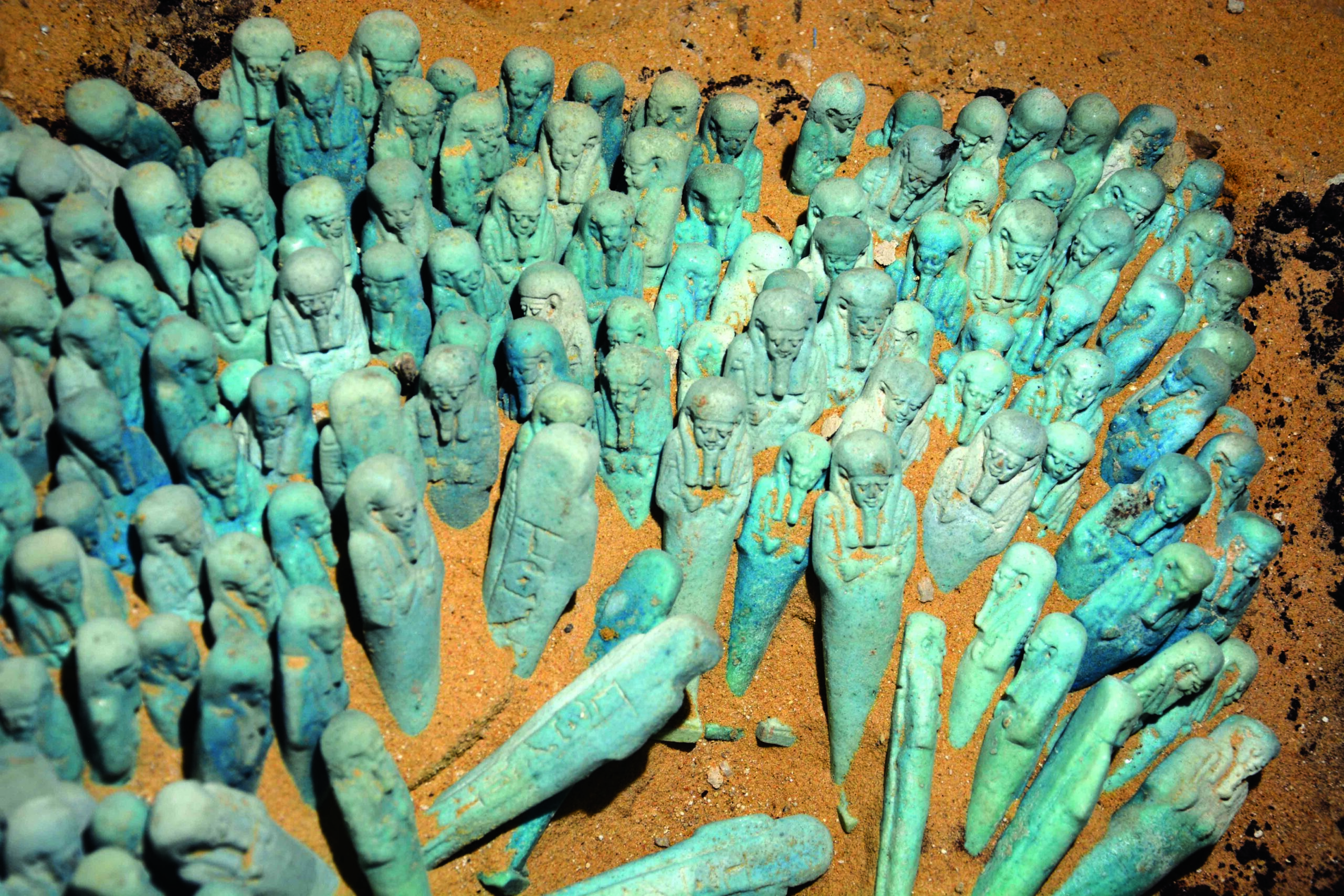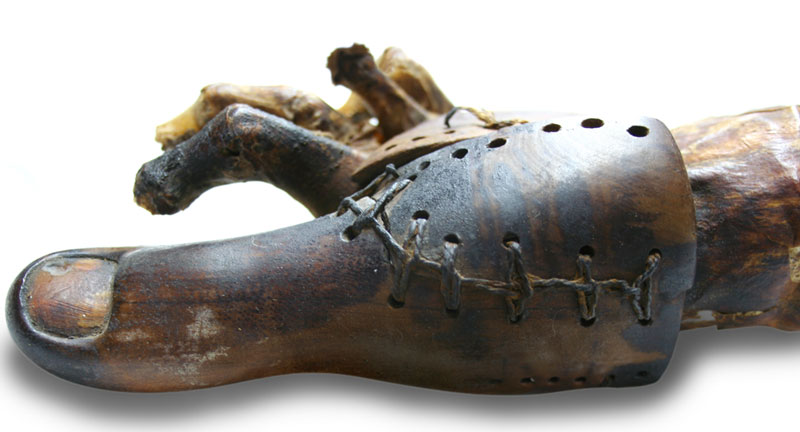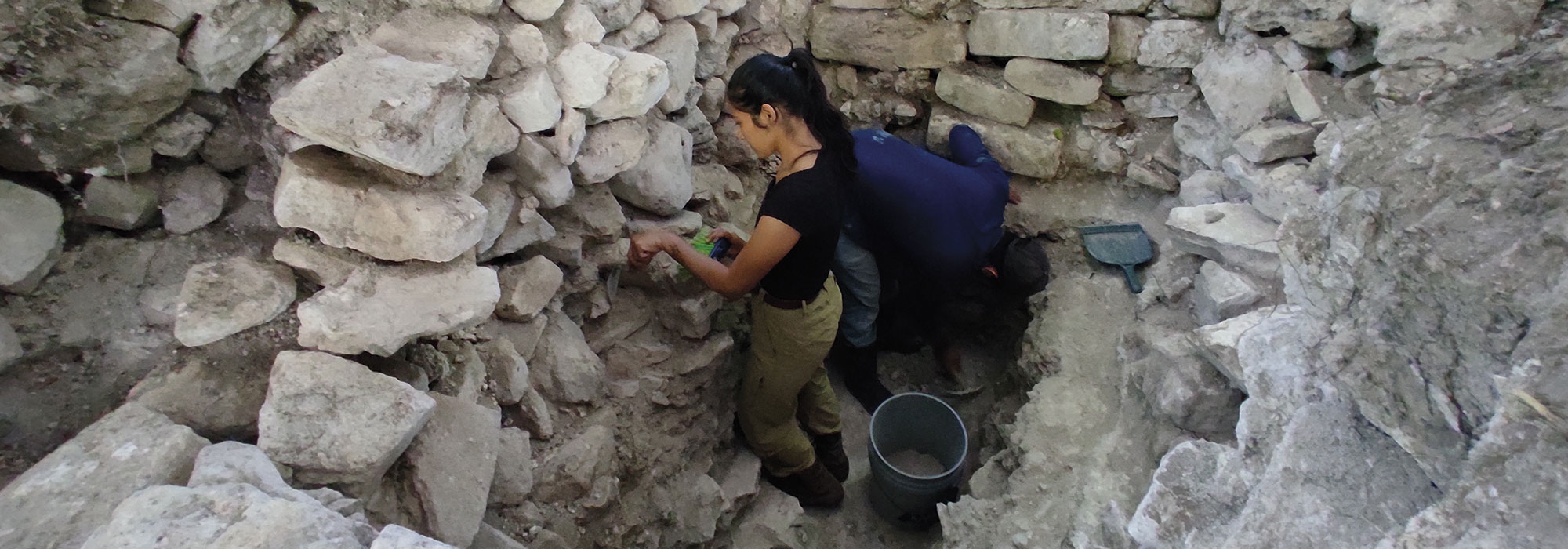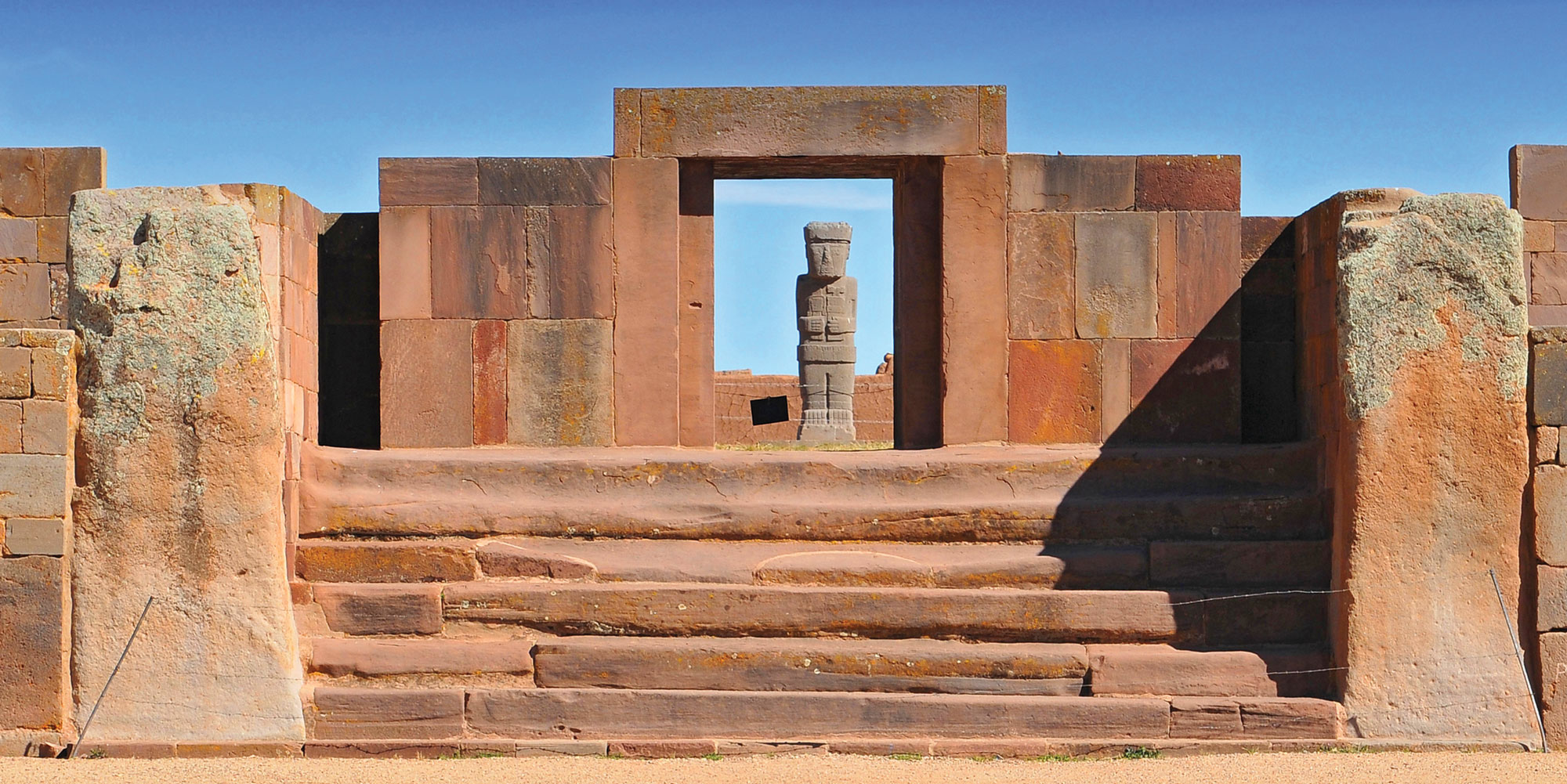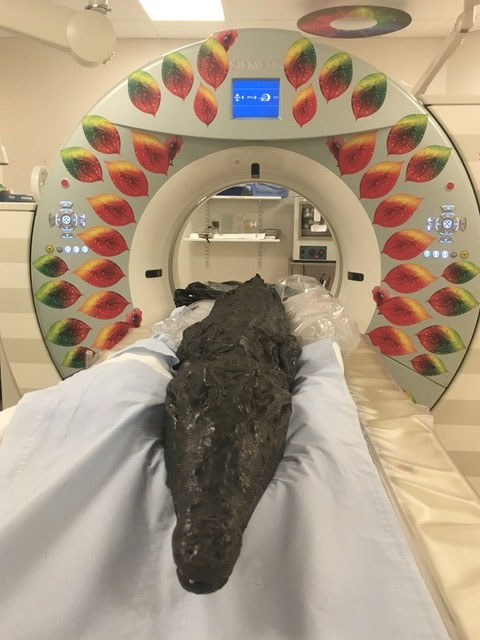
MANCHESTER, ENGLAND—According to a statement released by the University of Manchester, Lidija Mcknight of the University of Manchester and her colleagues analyzed a seven-foot-long Egyptian crocodile mummy with 3-D imaging technology. The study revealed an intact fish attached to a bronze hook inside the mummy, and showed that the crocodile, which is held at the Birmingham Museum and Art Gallery and estimated to be between 2,000 and 3,000 years old, had also swallowed many small stones shortly before death. Known as gastroliths, these stones would have helped the crocodile to digest food and regulate buoyancy. Some of the gastroliths were found higher in the digestive tract, indicating that the animal had probably swallowed them in an attempt to break down the fish. Mcknight and her team also replicated the bronze fish hook as part of the project. “The Egyptians probably used a hardened clay mold into which the molten metal, melted over a charcoal-based heat source, would have been poured,” she said. “Despite the passing of several millennia between the production of the ancient fish hook and the modern replica, the casting process remains remarkably similar,” she concluded. For more on animal mummies, go to "Messengers to the Gods."



